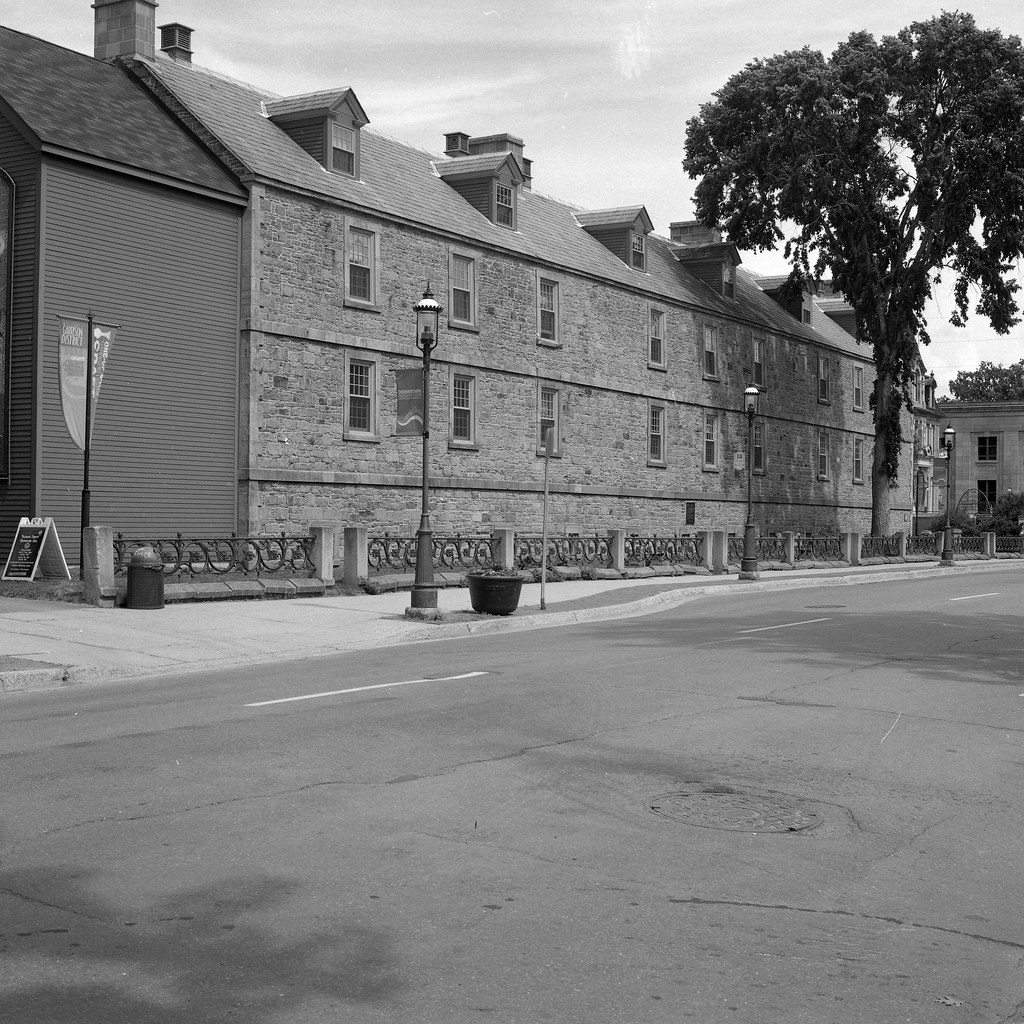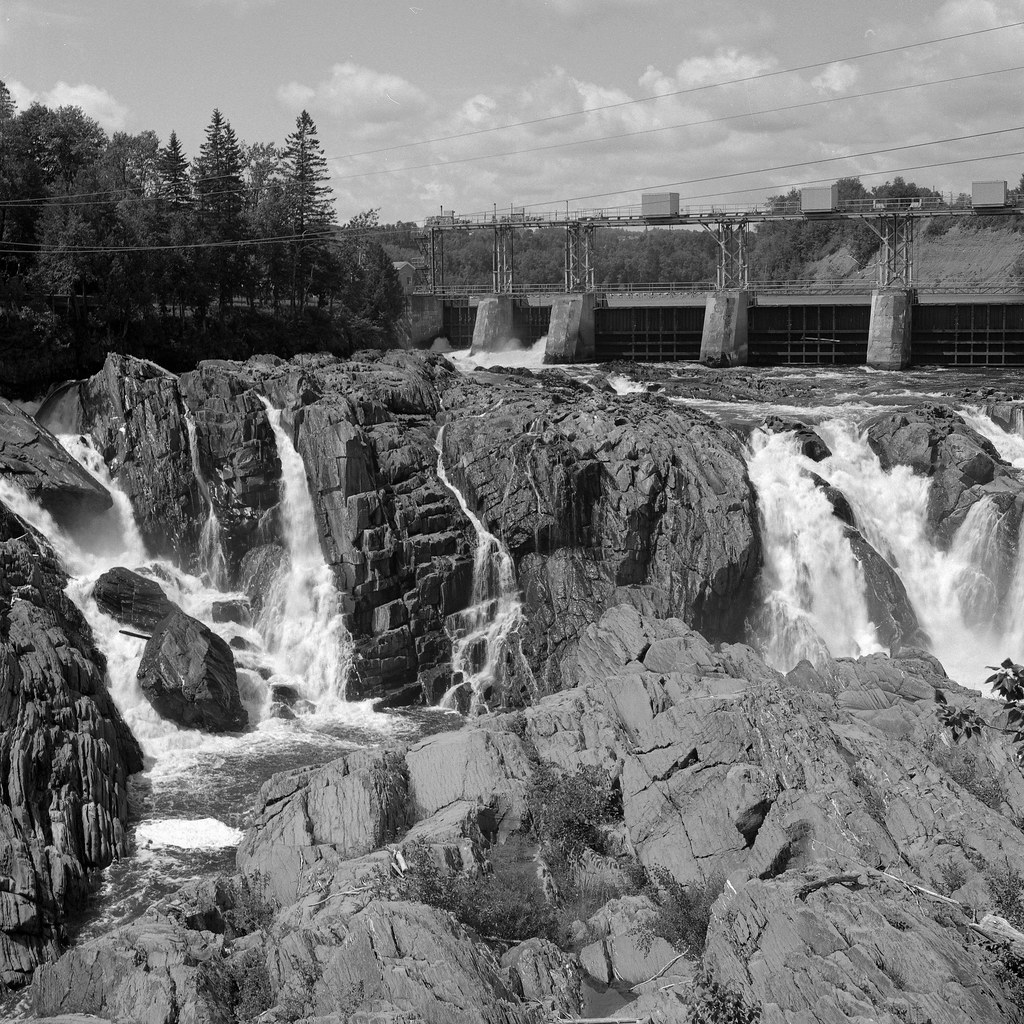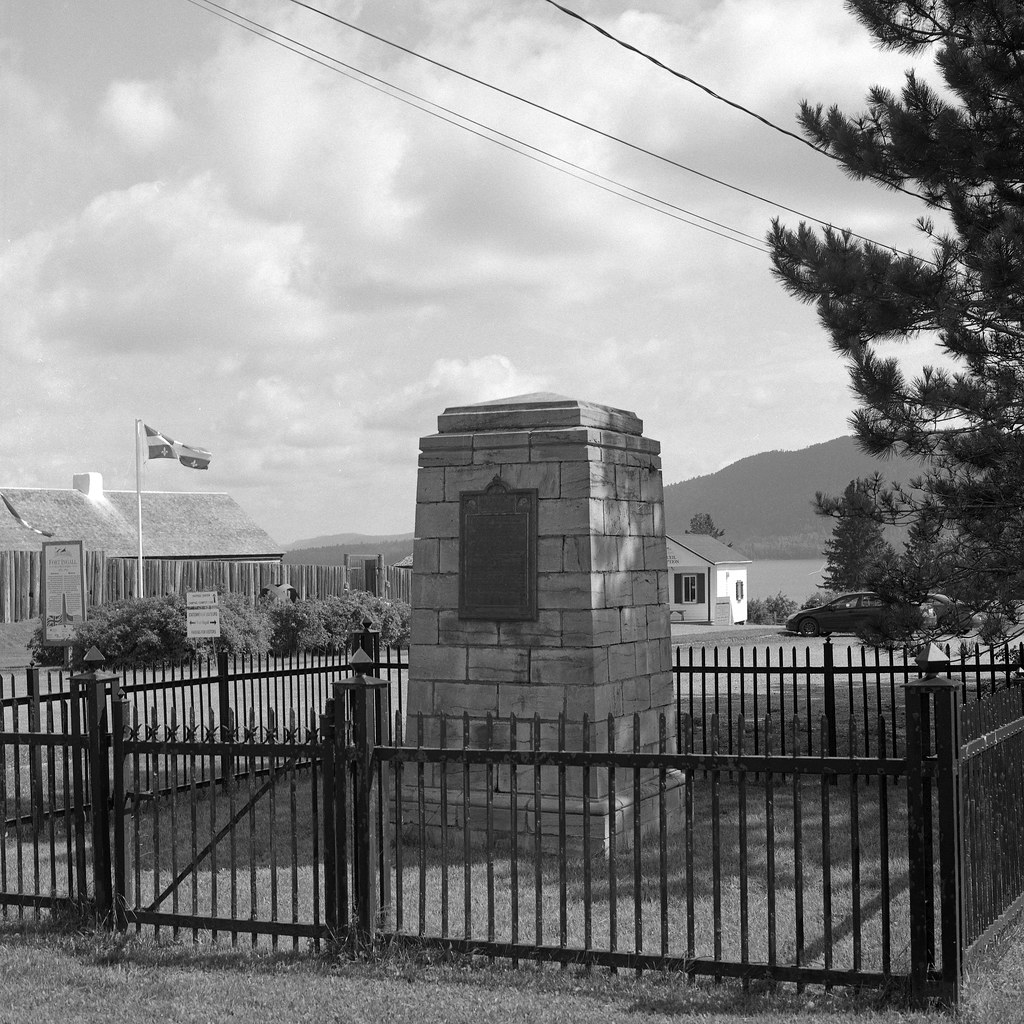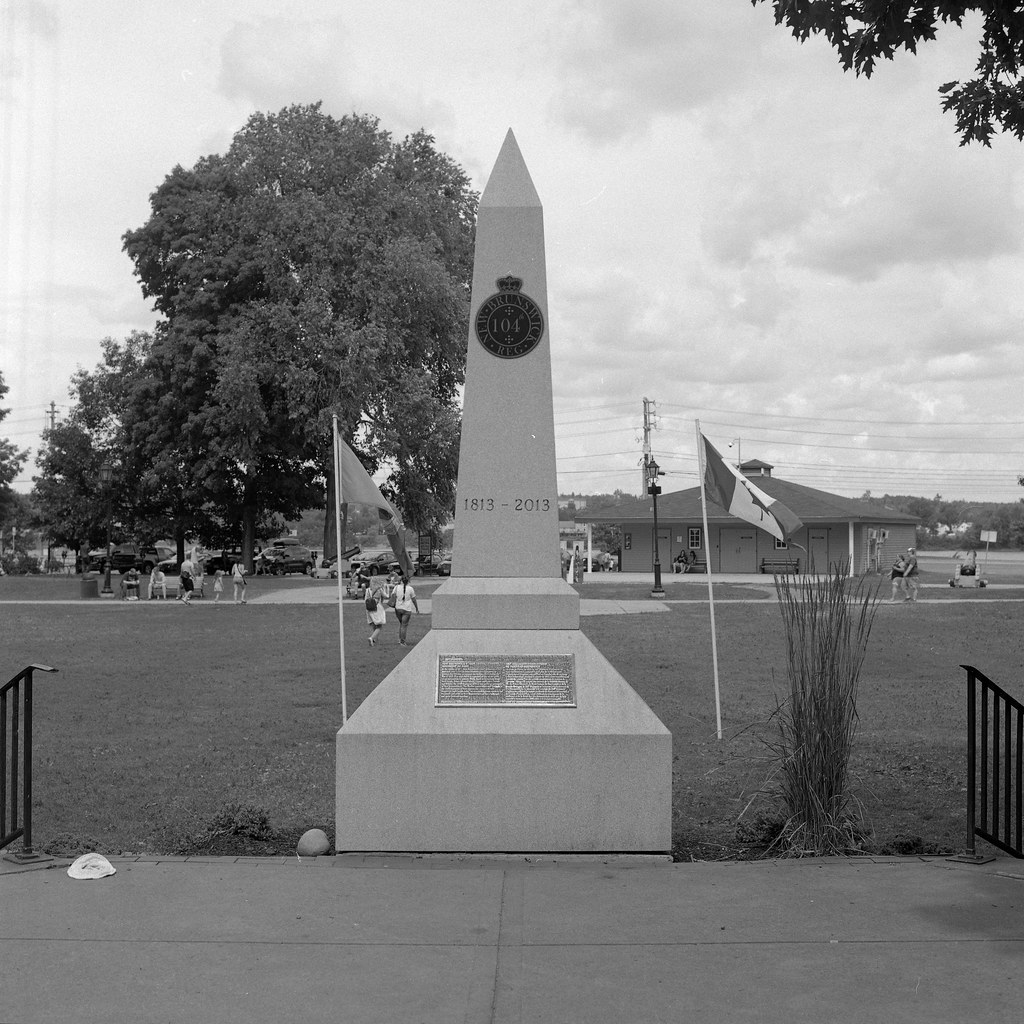While many regiments served with distinction during the Anglo-American War of 1812 on both sides of the fighting, I would not be able to share with you the tales of every single one. As many have histories that stretch well before and after the war and some even, have units that carry on these traditions still today. There is, however, one unit that stands out in the history of the war and of Canada. The 104th (New Brunswick) Regiment of Foot served their king and country both in combat and how they arrived at the main theater of the war.

The Fredericton Barracks while not original to the 1812 era, they were the center point of Military operations in Fredricton until the end of the 19th century.
Hasselblad 500c – Carl Zeiss Planar 80mm 1:2.8 – Ilford FP4+ @ ASA-100 – Kodak D-23 (Stock) 6:00 @ 20C
Raised in 1808 as the New Brunswick Regiment of Fencible Infantry, while dressed as a British regular infantry in red coats with buff coloured collars and cuffs the New Brunswick Regiment would never have to see service outside their home colony. Like other Provincial units, they were designed to serve in defense of their home colony reinforcing any British regular unit that was stationed there. But the staff of the regiment saw that they men could be more and appealed, several times, to Horse Guards to have their unit made a part of the regular army. While their request was turned down several times, it was finally accepted in 1810. The unit was taken into the British line at the 104th (New Brunswick) Regiment of Foot. As tensions rose between England and the United States the 104th was deployed to the most important points throughout New Brunswick as the colony shared a land boundary with Massatuchettes, today is known as the State of Maine. After the first year of war and when word was received that the American Army was massing at Sacketts Harbor in the spring of 1813, Governor General George Prevost appealed to John Sherbrooke, Governor of Nova Scotia to send reinforcements in the form of the 104th.

Grand Falls, sadly due to lack of rain, they weren’t too grand when I visited. Today they serve to power a hydroelectric station..
Hasselblad 500c – Carl Zeiss Planar 80mm 1:2.8 – Ilford FP4+ @ ASA-100 – Kodak D-23 (Stock) 6:00 @ 20C
The winter of 1813 was a particularly nasty one; the St. Lawrence River was frozen over so the 104th would need to complete an overland march if they were to be in Upper Canada in time to be of use. Sherbrooke ordered that the headquarters, grenadier, light, and four line battalions make preparations to march. The grenadier and headquarters companies left the military complex at Fredericton, New Brunswick on the 16th of February, 1813. Each successive day a company would depart with the light company leaving last on the 21st of February. The conditions were nothing short of brutal, snowshoes were the order of the day while squads of men would take turns dragging toboggans with their gear, temperatures would reach lows of -31C. They would, according to one officer’s journal, present a most unmilitary like appearance and would often march in single-file to prevent them from sinking into the deep snow. At night they would dig out shelters in the snow, covering the tops with felled trees that offered some shelter from the weather.

A plaque related to the Temiscouta Portage and the 104th located by the rebuilt Fort Ingall which defended Canada during the Aroostook War of the 1830s.
Hasselblad 500c – Carl Zeiss Planar 80mm 1:2.8 – Ilford FP4+ @ ASA-100 – Kodak D-23 (Stock) 6:00 @ 20C
The journey would take the regiment past Grand Falls, which you can see still today in Grand Falls, new Brunswick and across the Temiscouta Portage, which today is part of the Trans-Canada highway through Cabano, Quebec. With frostbite affecting almost all the men, they would begin to arrive in Quebec City on the 15th of March 1813 having traveled over five hundred kilometers over the course of twenty-four days. The regiment would rest and resupply for ten days before heading out again for Kingston. The journals of the officers would describe the jubilation when they finally arrived at Kingston and saw the now thawed lake. From Kingston the regiment found itself spread out across Upper Canada by way of Lake Ontario. They would go on to serve at Sacketts Harbor, Lundy’s Lane, Beavers Dam, Fort Erie, and Cook’s Mills. The unit would continue to serve in defense of the Canadas following the end of the War of 1812 and applied to be sent overseas. With the defeat of Napoleon at the Battle of Waterloo in 1815, a sense of peace settled across the world which had been at war for many decades. The 104th would be stood down on the 24th of May 1817.

A commemorative marker at Officer’s Square in downtown Fredericton, NB for the bicentennial of the march.
Hasselblad 500c – Carl Zeiss Planar 80mm 1:2.8 – Ilford FP4+ @ ASA-100 – Kodak D-23 (Stock) 6:00 @ 20C
Today the lineage of the 104th is carried on by the Royal New Brunswick Regiment, raised in 1869, and carries the battle honour of NIAGARA for the service of the 104th during the Anglo-American War of 1812. The route of the 104th is drivable today from Kingston to Fredericton will take you a good day’s drive along good highways at good speeds. I have Eamonn O’Keefe to thank for introducing me to the actual march through a video he produced for a contest and a Historica Dominica minute. You can watch his video below.
The Video created by Eamonn O’Keeffe related to the march of the 104th
Written with Files from:
Web: www.warof1812.ca/march.htm
Web: www.warof1812.ca/104th.htm
Collins, Gilbert. Guidebook to the Historic Sites of the War of 1812. Toronto: Dundurn, 2006. Print.